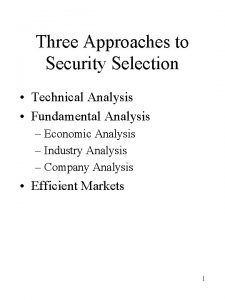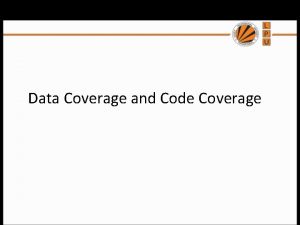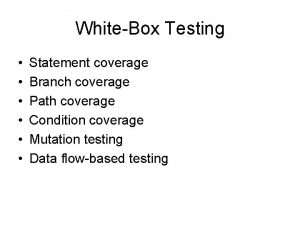Three Approaches to Achieve Near Universal Coverage in










- Slides: 10

Three Approaches to Achieve Near. Universal Coverage in Delaware Based on Work Prepared for the “Single Payer Committee” Jack A. Meyer, Ph. D. Elliot K. Wicks, Ph. D. Economic and Social Research Institute

Building Blocks Approach —ELEMENTS— • Medicaid and SCHIP become single program – Cover everyone up to 200% of poverty – Make enrollment automatic, where possible • State purchasing pool for small employers and individuals — offering multiple insurers • Reduce insurers’ ability to rate premiums based on risk • Have young adults covered under parents’ policies • State-funded tax credits, graduated by income for: – High-risk individuals – People with incomes 200% to 300% of poverty 2

Building Blocks Approach —ASSESSMENT— • Substantially more people covered • Fragmented system remains • Portability somewhat improved for those in new combined SCHIP/Medicaid program and those in the state pool • Resource costs (medical services consumed) higher because more people covered; little change in administrative costs • Substantial increased budgetary cost to pay for those newly eligible for public programs and for those with tax credits • Improved equity: more equal treatment of equals; broader sharing of risks • No new tools to control costs • Little government compulsion or disruption of status quo Economic and Social Research Institute 3

Employer “Play or Pay” Mandate —ELEMENTS— • Employers not offering coverage pay a fee to cover cost of coverage for standard plan. – Employers pay 80% for employee and dependents – Employees contribute 20% • Fee is waived for employers who offer coverage and pay 80% of premium • Temporary subsidies for low-wage, low-profit employers • State operates Delaware Health Insurance Pool – Contracts with multiple insurers – Provides coverage for those without employer coverage Economic and Social Research Institute 4

Employer “Play or Pay” Mandate —ELEMENTS (cont. )— • All people below 150% of poverty covered by Medicaid/SCHIP • Non-employees must buy coverage through the pool, premiums graduate by income • Insurers can’t sell any policy except those offering at least the “standard” benefits and also requiring employer to pay 80% of premium Economic and Social Research Institute 5

Employer “Play or Pay” Mandate —ASSESSMENT— • Nearly everyone covered, but coverage sources fragmented • Improved portability if in the pool • Increased real resource cost — more people covered; little administrative cost savings • Budgetary cost not greatly increased — employers and employees bear most new costs, so “off budget” • Broader risk sharing • Improved equity: equals treated equally • Increased compulsion on employers and all residents Economic and Social Research Institute 6

Single State Purchasing Pool —ELEMENTS— • Eligibility: all legal residents • Automatically enrolled in state pool — two variants – Single state plan (like “Medicare for all”); or – Multiple insurers (like state employees’ plan for all) • Benefit package: – Up to 150% of poverty: Medicaid benefits – Everybody above 150% of poverty: actuarially equal to most popular small-group plan (but could buy supplemental coverage) Economic and Social Research Institute 7

Single State Purchasing Pool —ELEMENTS (cont. )— • Financing: – Single payer: • Premiums (community rated) — with graduated subsidies up to median income; others pay full cost • General revenues cover subsidies – Multiple payer: • Employer: 8% of payroll • Employees: 2% of wages between $10, 000 and $200, 000 • Health Care Commission would administer Economic and Social Research Institute 8

Single State Purchasing Pool —ASSESMENT— • Universal coverage, automatically • Full portability of coverage • Real resource cost (medical services consumed) – Single payer: Higher because of new people covered; reduced by large administrative savings – Multiple payer: Somewhat less administrative savings • Substantially higher government budgetary costs – Single payer: to cover subsidies (other costs paid by premiums) – Multiple payer: Payroll tax a major source of financing, but expenditure is “on-budget” Economic and Social Research Institute 9

Single State Purchasing Pool —ASSESMENT (cont. )— • Cost control: – Single payer: State has great leverage to bargain with providers and vast data – Multiple payer: State bargains with insurers; insurers compete for enrollees (like state employees’ plan) • Much greater equity: – No penalty for high-risk people; risk very broadly shared – Subsidies based on income (need) – Equals treated equally • Substantial compulsion and disruption of status quo Economic and Social Research Institute 10
 Universal health coverage in tamil
Universal health coverage in tamil Goals of universal health coverage
Goals of universal health coverage Dimensions of universal health coverage
Dimensions of universal health coverage Near foot near shoulder tackling
Near foot near shoulder tackling Three quarter crown
Three quarter crown What are the three approaches to security?
What are the three approaches to security? What are the different approaches of probability
What are the different approaches of probability A. https://methodology.accenture.com
A. https://methodology.accenture.com Three approaches to peace
Three approaches to peace Three approaches of decision making
Three approaches of decision making Self-help approach in community development examples
Self-help approach in community development examples



















